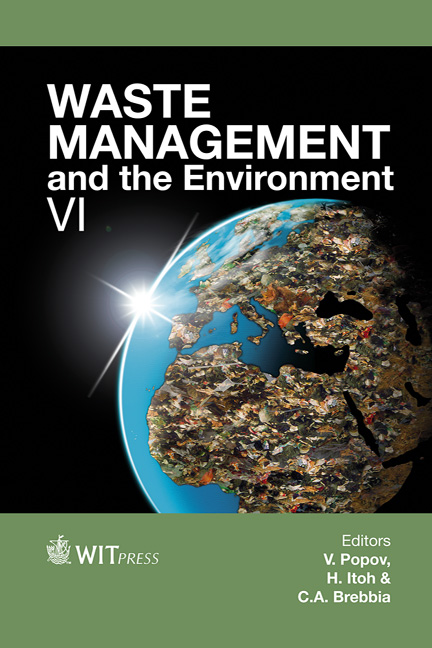Economic Viability Of LFG Recovery Under The CDM Mechanism
Price
Free (open access)
Transaction
Volume
163
Pages
10
Page Range
83 - 92
Published
2012
Size
1,057 kb
Paper DOI
10.2495/WM120081
Copyright
WIT Press
Author(s)
L. Abi-Esber & M. El-Fadel
Abstract
This paper examines the viability of investment in landfill gas (LFG) recovery and power generation under the clean development mechanism (CDM). The analysis is conducted at a prototype closed landfill with 4 million tons of organic waste and a CH4 generation potential of 19.8 to102.6 m3/ton of waste estimated on the basis of field measurements. Five power generation technologies were compared including reciprocating internal combustion engines, gas turbines, organic Rankine cycle engines, Stirling cycle engines, molten carbonate fuel cells and solid oxide fuel cells at a capacity of 0.5 or 1 MW. None of the tested technologies exhibited favorable economic viability at the measured LFG emission rates. Using larger emission rates, certain schemes could pay back within a period of 7 years depending on the size of the generator and the cost of the power generation technology. Therefore, CDM initiatives are not always viable particularly in developing countries with waste streams characterized with high organic fraction. They need to be based on careful examination of waste characteristics and landfill history which are closely correlated with the magnitude and trend of LFG emissions. Keywords: landfill gas, energy recovery, power generation, clean development mechanism, developing countries. 1 Introduction Solid waste is considered a source of greenhouse gas (GHG) emissions due to microbial decomposition of organic materials. The latter constitute the greater portion of solid waste in developing countries where landfills remain an essential element of any waste management system and often the only economic form of
Keywords
landfill gas, energy recovery, power generation, clean development mechanism, developing countries.





